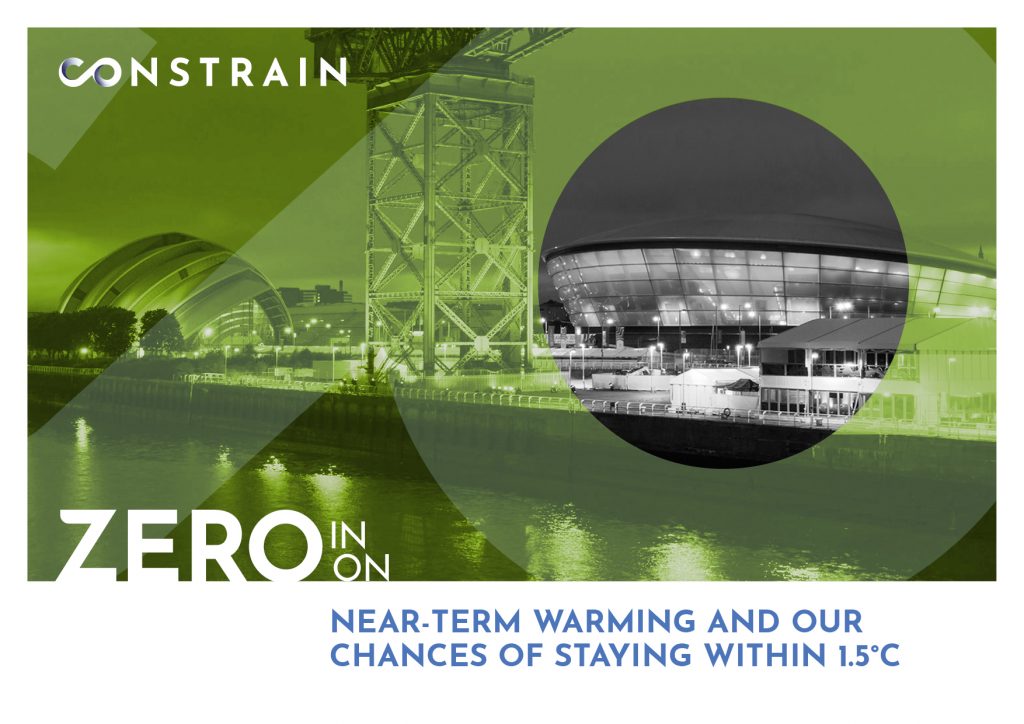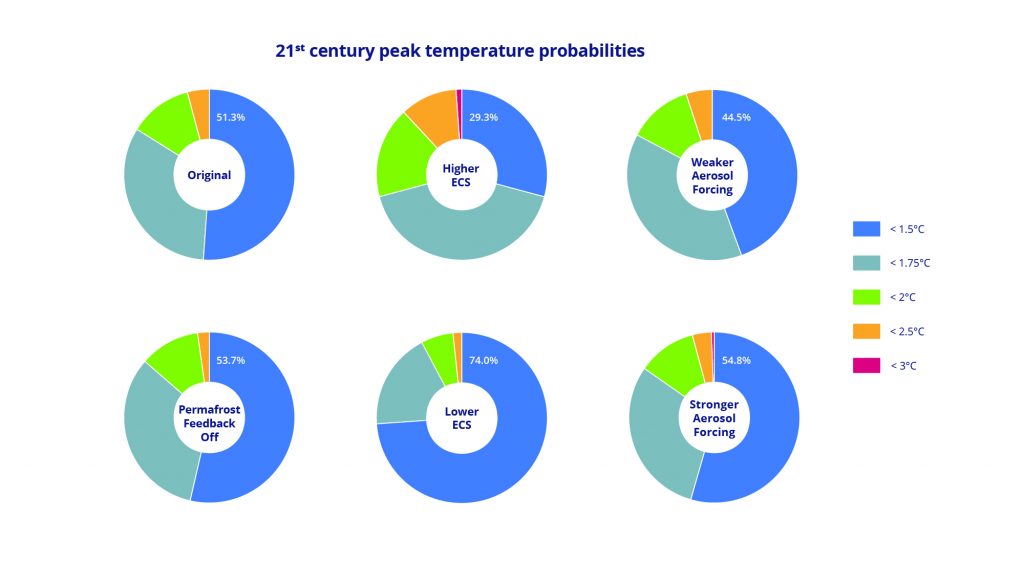There are uncertainties how emission cuts will affect chances of staying with in 1.5°C warming dependent upon how the climate system responds. By looking at the science and models behind COP26 headlines and statements, we better understand our chances of staying within 1.5°C and mitigate risk. ZERO IN reported by the CONSTRAIN project highlights issues

COP26 focused on "keeping 1.5 alive", but how well do we understand our chances of limiting warming to 1.5°C? Even with strong emissions cuts, the warming we end up with could be higher - or lower - depending on how the climate system responds. Our new report provides further insights.
As the world reflects on COP26, the messages from the summit are clear: to avoid the most dangerous climate change, we need to both cut greenhouse gas emissions now, and develop more ambitious climate plans before world leaders meet again in Sharm El Sheikh next year. The importance of keeping warming below 1.5°C is reflected in the Glasgow Climate Pact, and now we need strong leadership from across society to hold governments to account in the run up to COP27.
What is less clear is the fact that, whilst global action is the most crucial factor, how the climate will change also depends on how exactly the climate system will respond to increasing greenhouse gases concentrations in the atmosphere, particularly over the coming decades.
The new ZERO IN report by the CONSTRAIN project shines a light on these issues, unpicking some of the science behind the headlines and high-level statements coming out of COP26. We found that, even if we cut emissions hard and fast, temperatures could still rise more – or less – than our best estimates from climate models.
But this doesn’t mean that the climate models are giving us the wrong information, or that avoiding the most dangerous climate change will be harder than we thought. Instead, it means that we need to look at the full range of possibilities that the climate models tell us about, so that we can better understand our chances of staying below 1.5°C and work to minimise the climate risks.
Climate model projections include a range of possibilities
Even with deep and rapid emissions cuts, we can expect to reach 1.5°C warming in the mid-2030s. But behind that number lies a range of possibilities, including that temperature rise stays below 1.5°C.
Why a range? Our ability to model the climate system and make future projections is improving all the time, but given all its complexities, pinpointing exactly how the climate will respond to future emissions is simply not possible.
There are still questions around key processes that will affect our future climate, such as precisely how temperatures will respond to a long-term doubling of atmospheric CO2 concentrations (known as Equilibrium Climate Sensitivity or ECS), and the roles that aerosols (which reflect sunlight back into space among other things) and permafrost (which releases carbon as it thaws) will play.
We used a simple climate model to investigate how these processes could affect the maximum temperature change we can expect to see this century.
Sticking to an illustrative pathway that reflects strong emissions cuts that reach net zero by 2050, we found that changing the ECS by 10% could cause an 8% difference in peak temperatures. Changing how strongly aerosols and permafrost affect the climate system had a less noticeable effect on future temperatures, but when it comes to climate change, every bit of warming matters and can still lead to significant impacts.
And there are different chances of these possibilities occurring
How these climate system processes manifest in reality could also affect our chances of staying below 1.5°C, even if we stick to that same strong emissions reduction pathway.
Our “climate wheels”, based on the results from the simple climate model, show how the chances of temperatures staying below 1.5°C change if we adjust ECS, aerosol and permafrost effects in the same way as for the peak temperature experiment.

We found that while the original model set up gives us a 51% chance of staying below 1.5°C, increasing ECS by 10% (so temperatures respond more strongly to rising atmospheric CO2 concentrations) means this chance falls to 29%, while reducing ECS by 10% increases this chance to 74%. Changing the aerosol and permafrost properties have less of an effect, but still alter our chances of staying below 1.5°C.
None of this means that it will be harder (or easier) to stay within 1.5°C than we thought – instead, it shows that, alongside different choices we make as a global society, and the emissions pathways they lead to, complex climate processes could also lead us to different climate futures.
Ultimately, it means that instead of focusing on a single temperature projection, we need to prepare for a range of eventualities and the climate impacts they might bring. The more we are aware of these eventualities, the better we can plan for what lies ahead.
The full report is:
ZERO IN ON: Near-term warming and our chances of staying within 1.5°C. The CONSTRAIN Project Annual Report 2021, DOI:10.5281/zenodo.5552389
For more information visit the CONSTRAIN website.
CONSTRAIN

Project details
- Project title: “Constraining uncertainty of multi decadal climate projections” (CONSTRAIN)
- Funding scheme: Horizon 2020 (Grant agreement no. 820829)
- Duration: 4 years (1 July 2019 – 30 June 2023)
- Project coordinator: University of Leeds
- Project website: https://constrain-eu.org/


